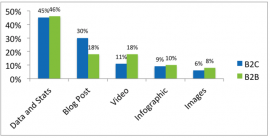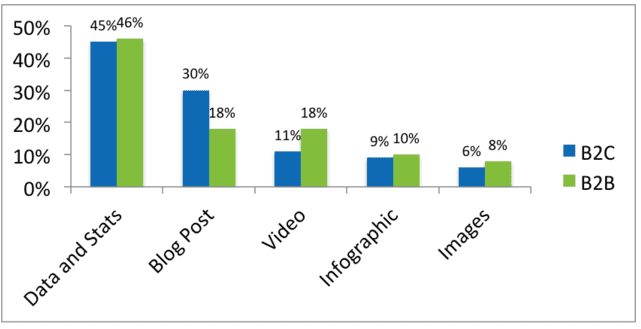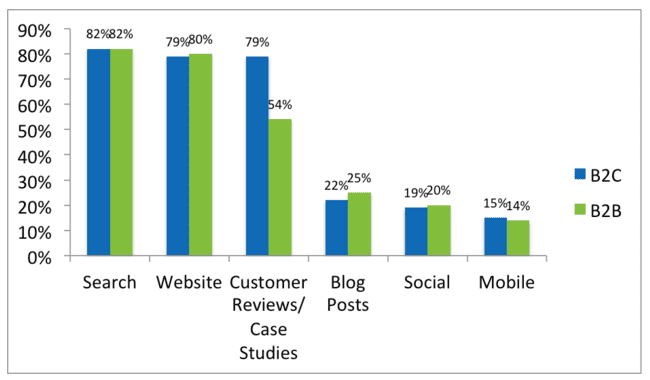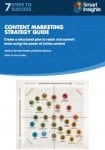How do B2B and B2C audiences differ in content preference?


Blue Nile research shows how different content types inform the buying decision
Content marketing is the key foundation of any inbound marketing strategy. Different types of content have differing roles to play along the buyer journey, but it can be hard to know what types of content should be used at what stage, and critically what content is most important when customers are deciding on whether or not to buy.
This new research from Blue Nile asked 528 US consumers about their buying behaviors. They asked questions to assess:
- The kind of content buyers use to make a purchase decision
- The number of channels they used to come a decision
- The types of channels they used during the research process
- The content types that resonate with B2C Vs B2B buyers.
Here’s our summary of the finding.
Content used to inform purchase decisions
This graph is useful for those unsure where to invest their content marketing budget. Consumers and B2B buyers both value data and stats very highly, which means getting these right can be key to boosting your conversion rate.
Blog posts are also highly rated, especially by individual consumers. These also tend to work well for SEO reasons because Google’s crawlers can scan them for keywords in a way that can’t be done with videos, infographics and images.
This doesn’t mean that you shouldn’t invest in videos, infographics or images because they are less favoured on average than data and blogs. These forms of content are still favoured by a considerable amount of consumers in both B2B and B2C sectors. In addition, what consumers report may be different to how they actually behave in reality. For example, most consumers, when asked, claim that advertising doesn’t affect their purchasing decisions, yet clearly the billions spent on advertising globally are being spent for a reason. Consumers may like to think they are hard-nosed and rational, and so will be influenced primarily by data and stats rather than images, but this doesn’t always mean this is actually the case.
The importance of multi-channel
The research shows that the average number of channels customers interact with when considering a purchase is 3, which is important for marketers because it means it is no good focusing all their efforts on one activity, such as optimising the company website, whilst leaving other channels to ‘fall by the way side’.
In total, 72% of B2C and 76% of B2B customers conduct research across 3 or more channels, whilst less than 1 in 10 only use 1 channel to when coming to a purchasing decision.
Top channels
This insight suggests that when buyers are in ‘research mode’ rather than ‘discovery mode’ they turn to channels like search, company website and customer reviews.

Social is not as important for this kind of research, although 1 in 5 still report they would use the channel before making a purchase. Having ‘mobile’ as a separate category here is misleading. In reality, customers may be likely to conduct their research on a mobile device via search, accessing the company website and via reviews. Whether they used mobile or desktop would be dictated by the position they found themselves in whilst doing the research. At work? Use a desktop. Waiting at a bus stop? Use mobile. Mobile is not within of itself a channel for conducting research, it is a way to access the channels by which one would conduct research, such as search, website and customer reviews. Therefore by listing mobile as a separate category it considerably understates its importance.
Conclusion
Both B2B and b2C buyers conduct extensive research before making a decision to purchase and almost all consult multiple channels. This means it is important to present a strong message across different platforms. Consumers value data and stats, so don’t make sure to display these prominently and never underestimate your customers intelligence by assuming they can be convinced to buy with nothing but fancy graphics and visuals. For more insights into what content compels people to buy, see the full report from Blue Nile.

Download Expert Member resource – Content marketing strategy guide
This guide shows you both how to develop a strategy to deploy content across all your online marketing and gives practical tips to make it happen. Now updated for 2016 to give the latest best practice advice.
Access the Content marketing strategy guide
From our sponsors: How do B2B and B2C audiences differ in content preference?



